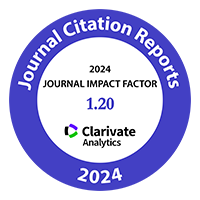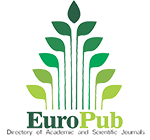Effects of Gibberellic Acid on Flowering Reduction, Fruit Quality and Yield of ‘d’Agen’ Plum (Prunus domestica L.) in Mendoza, Argentina
Palabras clave:
carga frutal, inducción floral, raleo químico, tamaño de fruto, Prunus comesticaResumen

In Mendoza, the primary industrial plum-producing region in Argentina, the ‘d’Agen’ cultivar represents approximately 90% of the cultivated area. The limited implementation of fruit thinning has a detrimental effect on final fruit size. The objective of this study was to determine the timing of flower induction in ’d’Agen’ plum and to evaluate the response to gibberellic acid (GA) application to reduce flower density and improve fruit size. Over three growing seasons in San Rafael (Mendoza), experiments were conducted on plants grafted onto ‘Marianna 2624’, spaced at 5x3 m and drip irrigated. GA (100 ppm) was applied at four distinct phenological stages: fruit set, young fruit, fruit near final size, postharvest, and a control with no GA application. In the first two seasons, the H phenological stage (fruit set, Baggiolini scale) was identified as the optimum time for reducing flowering via GA application. In the third season, increasing GA concentrations (0, 25, 50, 75 and 100 ppm) were evaluated. All concentrations reduced floral density compared to the control. However, fruit set was negatively affected by the 75 and 100 ppm treatments. The decline in flowering (between 60% and 90%) was incompatible with commercial yields. It was concluded that the optimal time for GA application to reduce floral density in ‘d’Agen’ plum was during phenological stage H. Further research is required to determine the most effective dose below 25 ppm.
Highlights:
- Flower induction in ‘d’Agen’ plum occurs at phenological stage H (fruit set).
- Gibberellic acid (GA) application at stage H reduced flower density up to 90%.
- High GA concentrations (75-100 ppm) decreased both flowering and fruit set (%).
- GA treatments improved fruit size but caused excessive yield reduction.
- Doses below 25 ppm should be evaluated to balance fruit size and yield.
Descargas
Citas
Agustí, M.; Reig, C.; Martínez-Fuentes, A.; Mesejo, C. 2022. Advances in Citrus flowering: A review. Frontiers in plant science. 13:868831. DOI: 10.3389/fpls.2022.868831
Cerri, M.; Rosati, A.; Famiani, F.; Reale, L. 2019. Fruit size in different plum species (genus Prunus L.) is determined by postbloom developmental processes and not by ovary characteristics at anthesis. Scientia Horticulturae. 255: 1-7. DOI:10.1016/j.scienta.2019.04.064
Di Rienzo, J. A.; Casanoves, F.; Balzarini, M. G.; González, L.; Tablada, M.; Robledo, C. W. 2020. InfoStat 2020. Centro de Transferencia InfoStat. FCA. Universidad Nacional de Córdoba. Argentina. http://www.infostat.com.ar
Drepper, B.; Bamps, B.; Gobin, A.; Van Orshoven, J. 2021. Strategies for managing spring frost risks in orchards: effectiveness and conditionality-A systematic review protocol. Environmental Evidence. 10: 32. DOI:10.1186/s13750-021-00247-7
Erogul, D.; Sen, F. 2015. Effects of gibberellic acid treatments on fruit thinning and fruit quality in Japanese plum (Prunus salicina Lindl.). Scientia Horticulturae. 186: 137-142. DOI:10.1016/j.scienta.2015.02.019
Giovanaz, M. A.; Fachinello, J. C.; Spagnol, D.; Weber, D.; Carra, B. 2016. Gibberellic acid reduces flowering and time of manual thinning in “Maciel” peach trees. Revista Brasileira de Fruticultura. 38(2): e-692. DOI:10.1590/0100-29452016692
IDR (Instituto de Desarrollo Rural). 2015. Informe por producto: Panorama del Sector Ciruela Deshidratada de Mendoza. Argentina http://www.idr.org.ar/wp-content/uploads/2016/04/Panorama-Ciruela-deshidratada-2015-.pdf/ (Access: 29 April 2025).
IDR (Instituto de Desarrollo Rural). 2020. Informe anual: Fenología de frutales 2020. Mendoza. Argentina. https://www.idr.org.ar/fenologia-de-frutales/ (Access: 29 April 2025).
IDR (Instituto de Desarrollo Rural). 2021. Censo de ciruela para industria. Producción primaria. Recolección geoespacial de producción primaria e industrial. Mendoza. Argentina https://www.idr.org.ar/wp-content/uploads/2022/10/censo_produccion_ primaria.pdf (Access: 29 April 2025).
Kaur, A.; Maness, N.; Ferguson, L.; Deng, W.; Zhang, L. 2021. Role of plant hormones in flowering and exogenous hormone application in fruit/nut trees: a review of pecans. Fruit Research. 1: 15. DOI:10.48130/FruRes-2021-0015
Lammerich, S.; Kunz, A.; Damerow, L.; Blanke, M. 2020. Mechanical crop load management (CLM) improves fruit quality and reduces fruit drop and alternate bearing in European plum (Prunus domestica L.). Horticulturae. 6: 52. DOI:10.3390/horticulturae6030052
Reginato, G.; Sotomayor, J. P. 2020. Cómo cosechar para obtener fruta de calidad en ciruelo europeo. Extension UC Davis Chile. https://www.plataformaextension.cl/ciclos/ciruelo-europeo/ (Access: 29 April 2025).
Sidhu, R. S.; Bound, S. A.; Hunt, I. 2022. Crop load and thinning methods impact yield, nutrient content, fruit quality, and physiological disorders in ‘Scilate’ apples. Agronomy. 12: 1989. DOI:10.3390/agronomy12091989
Wang, S.; Wang, Q.; Jiang, W.; Wang, Y.; Yan, J.; Li, X.; Wang, J.; Guan, Q.; Ma, F.; Zhang, J.; Zheng, Q.; Zou, Y.; Xu, J. 2024. Evaluating the sustainable cultivation of ‘Fuji’ apples: suitable crop load and the impact of chemical thinning agents on fruit quality and transcription. Fruit Research. 4: e009. DOI: 10.48130/frures-0024-0002
Yañez Toro, R. M. 2019. Regulación de la carga frutal en duraznero y nectarino (Prunus pérsica) cvs. Elegant Lady y Ruby Diamond mediante el uso de giberelinas y su efecto sobre el retorno floral bajo las condiciones de Chile central. Master’s thesis, Agronomy and Forest Engineering Course. Pontificia Católica de Chile University.
Zhebentyayeva, T.; Shankar, V.; Scorza, R.; Callahan, A.; Ravelonandro, M.; Castro, S.; DeJong, T.; Saski, C. A.; Dardick, C. 2019. Genetic characterization of worldwide Prunus domestica (plum) germplasm using sequence-based genotyping. Horticulture Research. 6: 12. DOI:10.1038/s41438-018-0090-6

Descargas
Publicado
Cómo citar
Número
Sección
Licencia
Derechos de autor 2018 Revista de la Facultad de Ciencias Agrarias UNCuyo

Esta obra está bajo una licencia internacional Creative Commons Reconocimiento-NoComercial-CompartirIgual 3.0.
Aquellos autores/as que tengan publicaciones con esta revista, aceptan las Políticas Editoriales.












.jpg)




